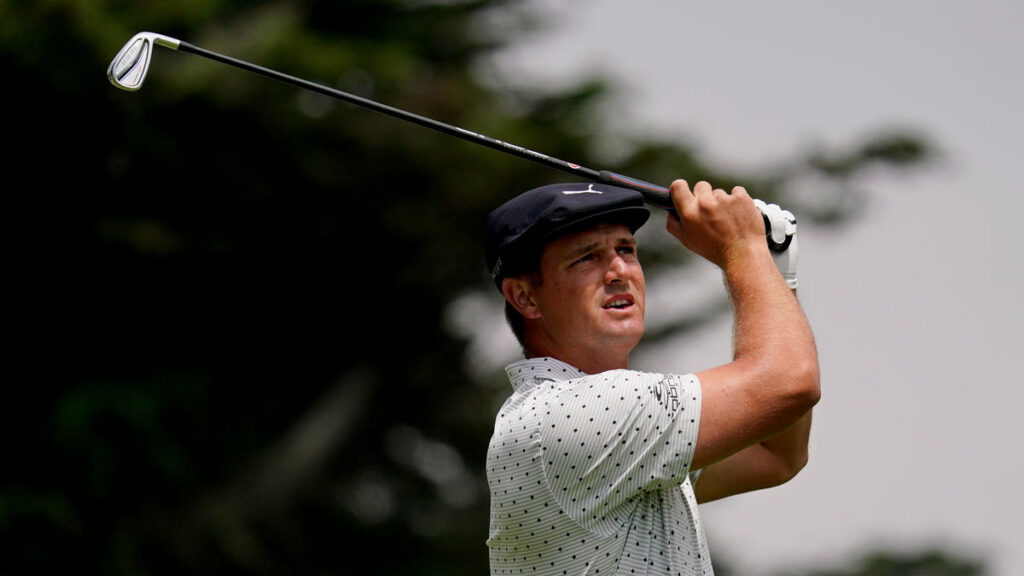I don’t know if you’ve been watching the French Open tennis but it has made for an unusual spectacle. In a normal world it’s held in late May/early June and Paris in late spring/early summer can provide wonderful weather; sometimes too hot for playing a sport that requires the exertion of tennis. In a Covid world it’s being held right now. This past week some of the players have been talking as if they’re contemplating wearing thermals.

From a golfing perspective, it might be a similar story with the Masters next month. Ordinarily the first major championship of the season concludes on the second Sunday in April. This time the final major of 2020 will end on the third Sunday of November. Nobody will be warbling on about how glorious the azaleas look at the back of the 13th green. Instead they may be trying to ascertain how many of the ‘patrons’ are sporting beanies to keep the cold out.
One thing seems for sure: we’ll be seeing more of Bryson DeChambeau. In saying that, I’m not predicting how often the new US Open champion will be appearing on our TV screens. I’m talking about his body size. About a year ago, he weighed in at around 190 pounds. Now he says he’s between 230-235 pounds. By Augusta, his target is apparently 245 pounds (that’s 171/2 in traditional UK weight). Apart from gym work, he attributes this to a diet of steak, potatoes and chocolate milk. (He’s certainly heading to the right place; they do a great chocolate milk at the Masters.)
Amazing feeling after so much hard work has gone into this transformation of my game and outlook. Thank you to my fans, team and sponsors for sticking with me. And thank you to the @USGA, @usopengolf and Winged Foot for an incredible test. So honored to have won my 1st major here pic.twitter.com/75OEogzMtc
— Bryson DeChambeau (@b_dechambeau) September 21, 2020
The way DeChambeau is going, maybe golf will have to adopt the system they have in boxing: weight divisions? Having bombed Winged Foot to defeat last month, DeChambeau’s secret plan for Augusta is… well, actually not a secret at all. He may choose to go with a driver that’s 48 inches long. (The standard length is 45 inches; 48 is the max allowed.) “We’re going to be messing with some head designs and do some amazing things to make it feasible to hit these driver 360, maybe 370 yards,” he said. “Maybe even further.” Perhaps he’ll go with one of each – remember the time at the Masters when Phil Mickelson turned up with two drivers, one to hit a fade and the other for a draw?
All this takes us to the bigger picture. In February, the Royal & Ancient Golf Club and the US Golf Association, who rule the game, published their Distance Insight Project. It acknowledged the problem of courses effectively being rendered obsolete by the distance the modern tour pro can hit the ball and said an assessment of possible solutions would be undertaken. After seeing DeChambeau strike a 423-yard drive at his Memorial Tournament in July, Jack Nicklaus lamented: “They can’t keep burying their heads in the sand. The need to stop studying and do something.”
The (sceptical) assumption is that nothing will happen because the R&A and USGA are afraid of being sued by some equipment manufacturers. But why? This is not like the Ping lawsuit against the PGA Tour over the grooves in its Eye2 irons. Any changes to the regulations would treat all manufactures the same way. As I’ve just noted, there is a limit on the length of a driver. Also on their size: the head cannot measure more than 460 cc. So why not limit the compression of the golf ball? A maximum of, say, 80 would significantly reduce the distance tour players could hit it while only affecting a tiny minority of club golfers. Or is the real problem that the PGA Tour regards huge-hitting as one of the key selling points of its ‘product’?
You can follow Robert Green on Twitter @robrtgreen and enjoy his other blog f-factors.com plus you can read more by him on golf at robertgreengolf.com
